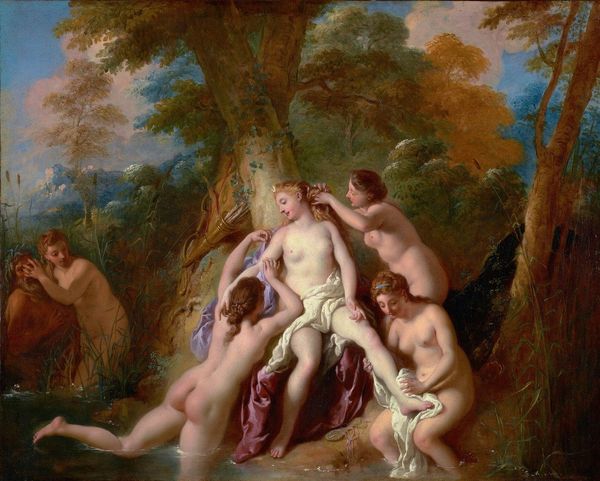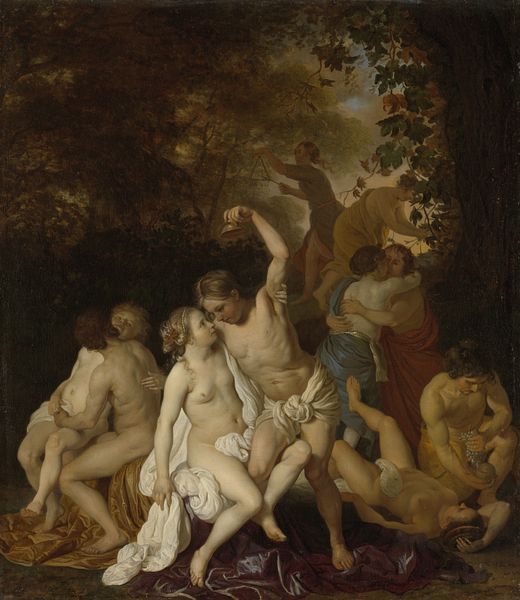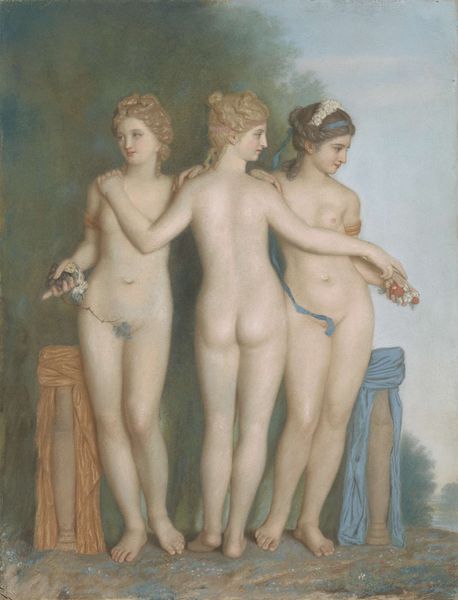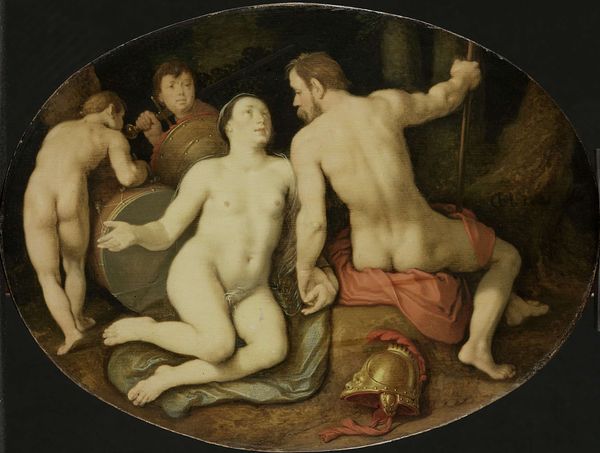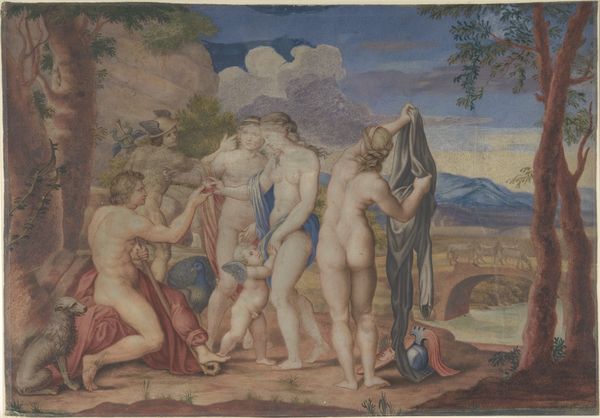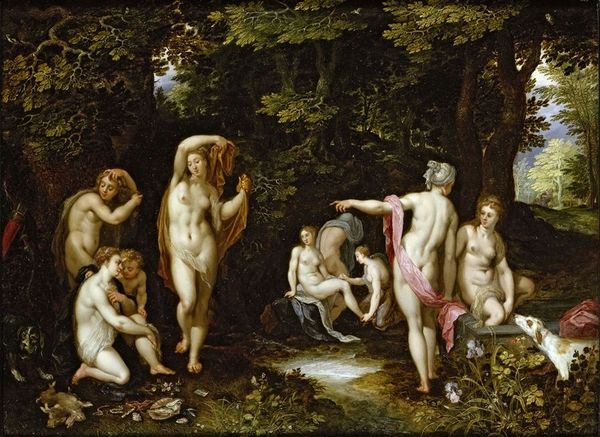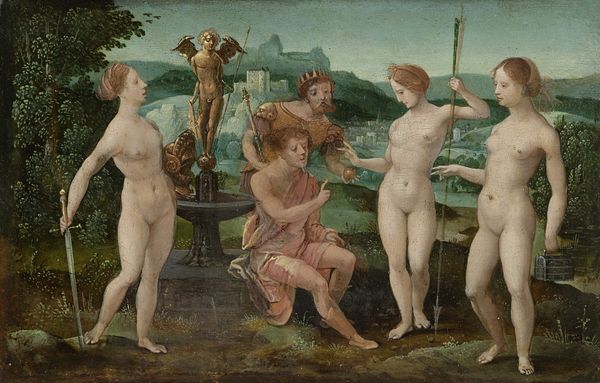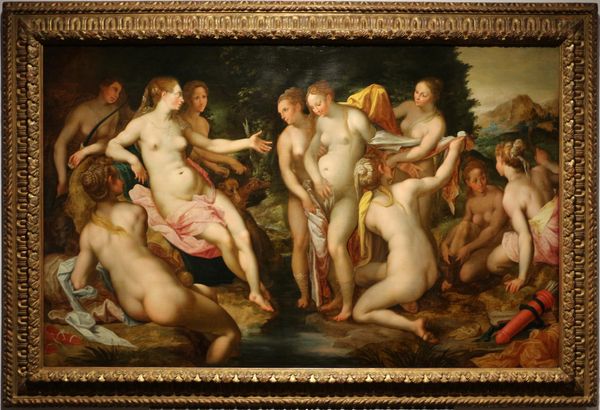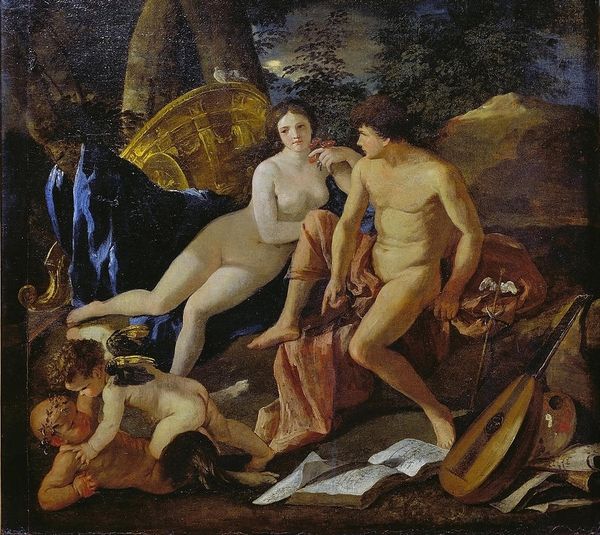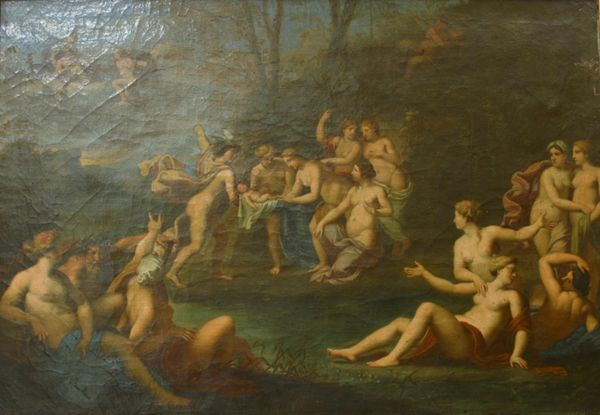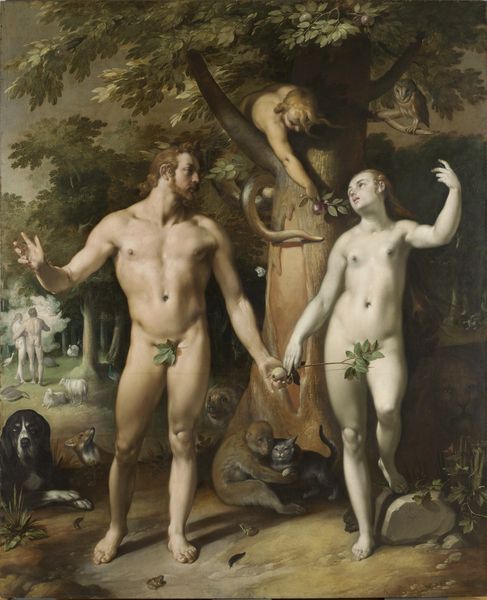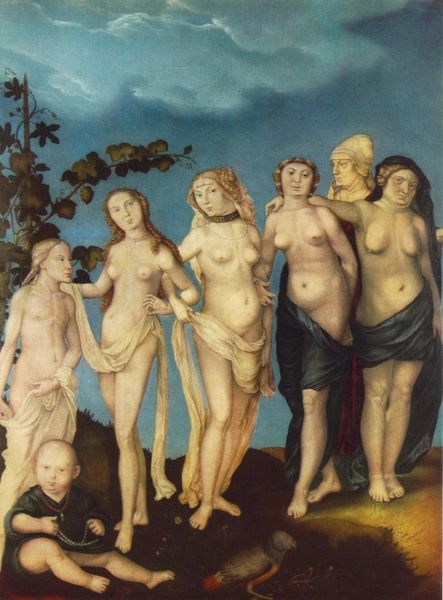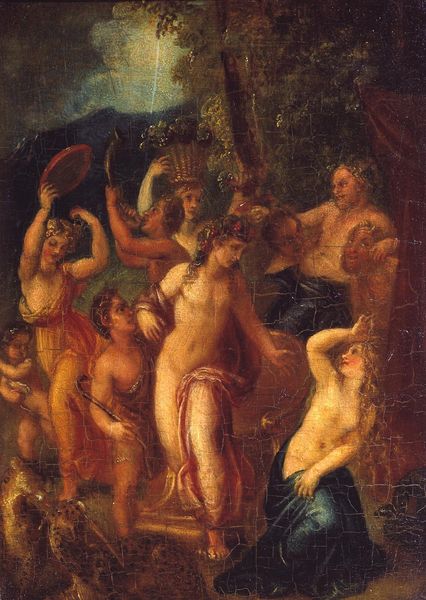
painting, oil-paint
#
allegory
#
baroque
#
dutch-golden-age
#
painting
#
oil-paint
#
landscape
#
figuration
#
oil painting
#
history-painting
#
nude
Dimensions: height 46.3 cm, width 34.9 cm, depth 5 cm
Copyright: Rijks Museum: Open Domain
Curator: This is Cornelis Cornelisz van Haarlem's "Pomona Receiving the Harvest of Fruit," painted in 1626. Editor: My initial reaction is one of mild…discomfort, actually. The figures seem oddly proportioned, almost elongated, and the colour palette is rather subdued. Curator: Well, let’s consider the historical context. Cornelisz was a prominent figure in Dutch Golden Age painting, a period heavily influenced by classical ideals. Pomona, of course, is the Roman goddess of fruit and orchards. The figures embody a certain ideal of feminine beauty prevalent at the time. Editor: Perhaps. But even within the Baroque style, the composition strikes me as…unbalanced. The figures are densely packed on one side, while the landscape fades almost listlessly into the background. It’s not very dynamic, despite the active scene. I struggle with its visual impact. Curator: I think we can view it through a lens of power, class, and colonialism. Who is receiving this bounty? Pomona, a powerful, almost divine figure. Where did these fruits come from? Certainly from colonized lands. This image could then be seen as glorifying an unequal exchange. And who were these idealized female nudes made for? Powerful and wealthy, presumably male, patrons. Editor: I see your point, but I also see skillful use of chiaroscuro, that contrast of light and dark, particularly around Pomona's figure. This visually isolates her as the receiver and emphasizes her significance. And while not classically dynamic, the circular arrangement does guide the eye throughout the scene, linking giver to receiver. Curator: And of course, this arrangement also excludes any alternative point of view. Those without wealth, power, or a phallocentric lens would likely view it differently, potentially questioning who the painting represents and whose perspective we're encouraged to accept. Editor: Ultimately, Cornelisz's visual decisions lead the viewers through a painting rich in complex meaning and cultural weight. Curator: Agreed. A fascinating confluence of myth, wealth, gendered ideals and an invitation for viewers to consider these things within its painted world.
Comments
No comments
Be the first to comment and join the conversation on the ultimate creative platform.
